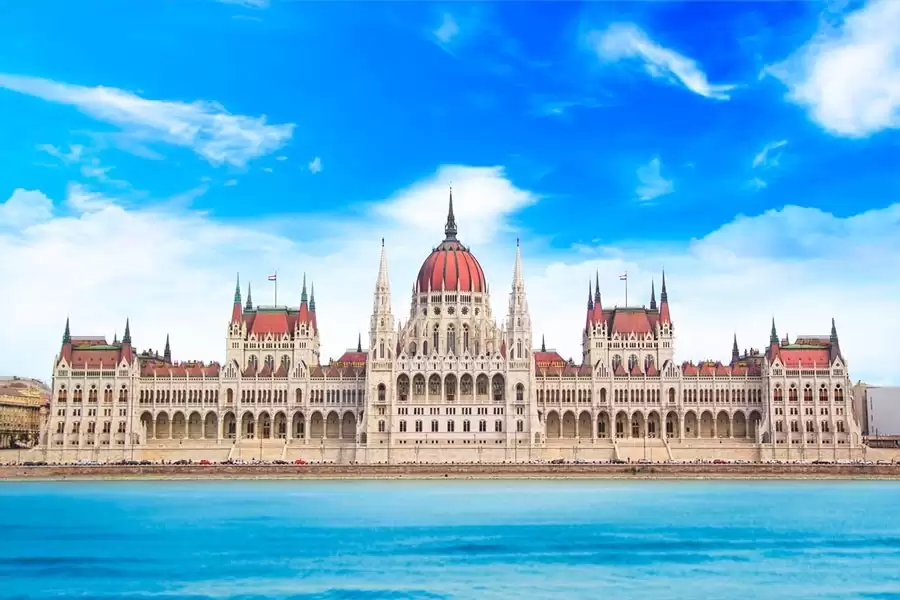On the banks of the Danube stands one of the most beautiful and significant buildings in the country,Parliament, which serves as the venue for the Hungarian legislature. The structure, consisting of 691 rooms, stretches for 268 meters, with its dome reaching a height of 96 meters. It is the third largest parliament in the world, with up to a thousand people working on its construction daily. The building was created using 40 million bricks, half a million decorative stones, 40 kilograms of gold for its embellishments, and is adorned with 242 statues.
Sights in Budapest's Parliament
Since 2000, the Hungarian Crown Jewels have been on display in Parliament: the Crown of Saint Stephen, the Scepter, the Orb, and the Renaissance sword. Numerous valuable artworks can be seen within the building, such as Mihály Munkácsy's painting "The Conquest of Hungary" or Miksa Róth's stained glass windows. You can purchase tickets for a guided tour in this magnificent building at our offer "Parliament Guided Tour 45-Min in Budapest".
Before the construction of this landmark, the National Assembly had no permanent location, and legislative sessions took place in different places throughout the centuries. As a result of the societal, cultural, and economic changes of the Reform Age, the concept of the Hungarian nation took shape, and the need for a permanent parliament arose. In 1882, a competition was finally announced for the construction of the country's house, which was won by Imre Steindl. Parliament was built according to his plans between 1885 and 1904. Inspired by the historicism of the London Parliament, Steindl designed an eclectic-style building that combines elements of the Renaissance and Baroque, but with a predominant influence of Neo-Gothic.
Interesting facts about the building
The structure of the building reflects the structure of the National Assembly at the time: the Lower House and Upper House chambers are located on either side of the dome, symbolizing the unity of the legislature. As the nascent nationalism of the time emerged, efforts were made to construct the building using exclusively Hungarian materials and with the assistance of Hungarian architects. The only foreign elements are the Dutch granite columns, which can also be found in the English Parliament.
One inconspicuous peculiarity of Parliament is its contemporary heating and ventilation system, which was one of the most modern in Europe at the time of its construction. Thanks to maintenance, the system continues to serve Parliament excellently today. Originally, cooling was achieved by circulating cold air through water basins (the world's first air-conditioned building!), and until 1994, several tons of ice stored in the building fulfilled this task.
